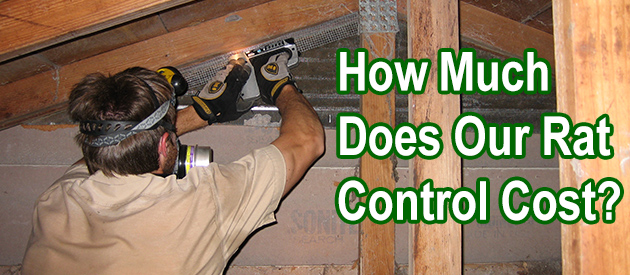Salt Lake County, Salt Lake City Rat Control Situation:
My neighborhood has a rat problem and the town has hired someone who put traps on everyone's property. I'm scared to death for the stray cats, raccoons, snakes and other predators of rats. How can I get them to understand this is a BIG mistake?!
I HAD A FEW GUYS THAT CAME OUT TO MY HOME IN SALT LAKE CITY. TOLD ME WHERE THEY WERE GETTING IN AT LEAST THE PLACES I COULDNT LOCATE, I WIRED THEM OFF. I HAVE SET TRAPS IN THE ATTIC W/ SLIM JIMS. I AM ONLY CATCHING LITTLE MICE NOT THE RATS I KNOW ARE UP THERE. THEY SOUND LIKE HORSES. I CANNOT REACH THE AREAS THAT THEY ARE IN AS THEY ARE TRAVELLING IN THE SOFFETS, KNOWING THEY TRAVEL THE ATTIC THEY WILL COME TO THE TRAPS W THE FOOD. BUT THIS HAS BEEN GOING ON FOR 2 MOS NOW AND I HV TO STOP THIS .. NOW !!! DO YOU HAVE ANY SUGGESTIONS AS FAR AS USING ANYTHING OTHER THAN SNAP TRAPS AND POISON WHICH THEY HV FIGURED OUT ARE POISON .. I HV EVEN GONE AS FAR AS CHOPPING UP THE BLOCKS W CAT FOOD. I HAD USED LIVE TRAPS, BUT THE DAMN THINGS WERE FIGURING OUT HOW TO GET OUT .. LITERALLY EATING THE BAIT AND OUT OF THE TRAP OVER NIGHT !! I REFUSE TO USE GLUE TRAPS I THINK THEY ARE INHUMANE AND SHOULD BE REMOVED OFF OF THE MARKET. I COULD CARE LESS IF YOU CAN USE OIL TO REMOVE THEM I HV SEEN RATS LOOSE BODY PARTS WHOLE THEY STRUGGLE TO GET OFF OF THEM OR TEAR SKIN. I WOULD APPRECIATE ANY HELP YOU CAN OFFER.
Hi David, My name is Tri Dao, I'm living in SLC Utah. I have rats in the attic and kids in the house. I went on line to check and read your website. I really impress with your experience and knowledge.I would like to ask you some question, My plan is remove the old blow-in insulation and put new one in. Do I still need to take care the rat problem first, then do the insulation or we can do 1 shot with the insulation and get rid of the rat too? Please help me with some solution in my case. Thanks in advance for your help and your services.
Salt Lake City Rat Control Tip of The Week
Are Mice or Rats Easier to Trap?
Intelligence:
Mice can often be much easier to trap because they are naturally curious creatures. It often takes just one or two days to capture a mouse after setting up a mousetrap. If you're having difficulty trapping a mouse you could consider moving it to a different location. Rats can be extremely intelligent and they communicate with each other meaning that any new objects will often bring about suspicion.
Reproduction:
Rats often reproduce at a much faster rate and this can make it difficult to control a rat problem if it's been going on for a long time. Most mice have around eight litters per year with around 5 to 6 pups in each litter. Rats can have between 6 to 12 pups in their litter.
Diet:
Rats can often be ravenous eaters and often require meat or a more substantial food source in order to remain satisfied. This can often make rats very difficult to trap because they can be so fussy about their food.
Size:
Rats have a definite size advantage over mice and this often means using much larger traps and some extra measures when it comes to keeping them in a trap. Because of the extra costs of these larger traps and the need to be more careful with where you set them, the requirements to trap a rat can be considerably higher than what it takes to trap the average mouse. Most rats can reach a length of between 7-10 inches and weigh up to a pound whereas the typical house mouse maxes out around 8 inches including its tail.
Tracking:
It's often easier to track rats because they leave larger footprints and they can cause a bit more destruction with their added size and strength. This can make finding rats throughout your home a bit easier.


